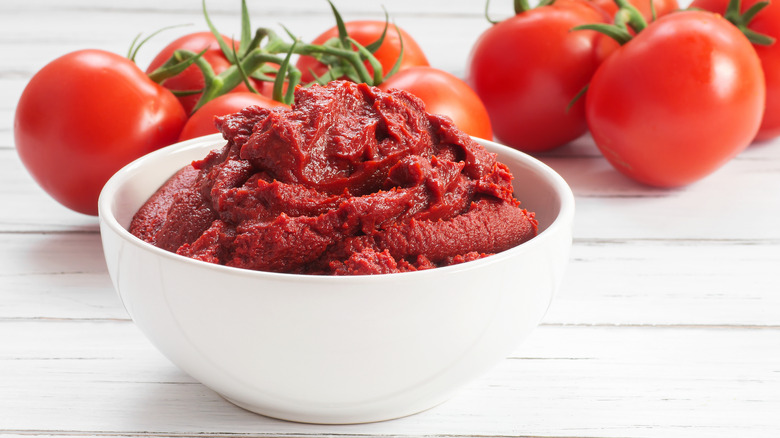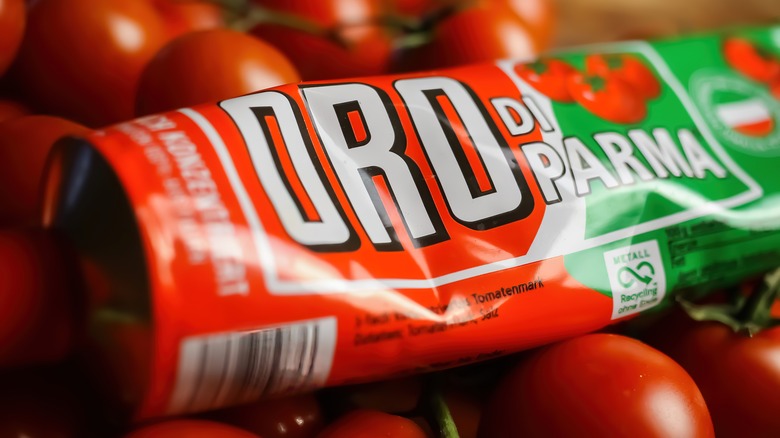The Difference Between Canned Tomato Paste And The Tube Variety
Tomato paste, whether canned or in a tube, is an easy, versatile ingredient that shows up in a lot of recipes, so you want to make sure you're getting the best out of it. Canned or in a tube, tomato paste is the same general product. It's made by straining out the skins and seeds of tomatoes, and cooking the water out of the flesh until all you're left with is a dense paste of concentrated, lightly sweet tomato flavor. But don't let the basics of the production process fool you, because there are actually some differences between canned tomato paste and the tubed versions, even within the same brands.
Crack open a can and tube of tomato paste, and the first thing you might notice is the difference in the colors. Canned tomato paste is darker than tubed tomato paste because it's made by being cooked at a different temperature. This not only changes the color but gives canned tomato paste a denser texture.
There is also a discrepancy in how the two styles are preserved, as canned tomato paste uses citric acid, while tubes use salt. Between the cooking and preserving, tubed paste ends up with a fresher, stronger flavor, while canned is more deeply savory and a bit more acidic. The acid in canned tomato paste can also produce a tinny flavor, although it will likely be less noticeable after being cooked.
What's the big difference between canned and tube tomato paste?
It may seem strange that the same product can vary this much based on how it's packaged, but the different containers are a result of where the tomato paste is produced. Tubed tomato paste usually comes from Italy, while canned usually comes from the U.S. The American style cooks the tomato at 200 degrees Fahrenheit to break down the flesh more, so it stays thick, while the Italian method only cooks at 150 degrees.
The shelf life of tomato paste also differs depending on the packaging. American cans use citric acid to lessen the metallic flavor effects of sitting in a can for long periods. However, that long shelf life disappears once cans are opened, as leftover tubed tomato paste can last twice as long as canned varieties, even if you transfer the canned tomato paste to another sealed container.
The last thing to consider is the complicating factor of the "Double Concentrated" label. As you would expect, double-concentrated tomato paste has an even stronger flavor. While both cans and tubes can be double-concentrated, it is far more common to see tubes made this way on your grocery store shelf. So the already stronger fresh tomato taste of tubes is made even more intense. The heat of cooking mitigates the variation between canned and tube tomato paste, but the differences are real and should be taken into account for any of your recipes.

